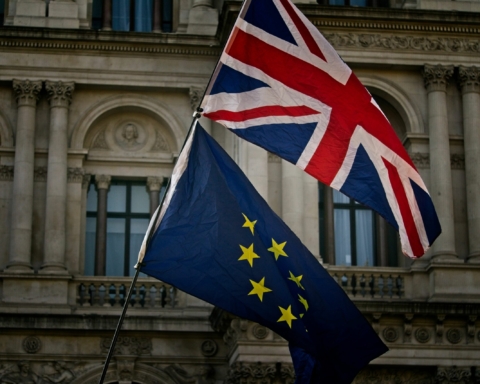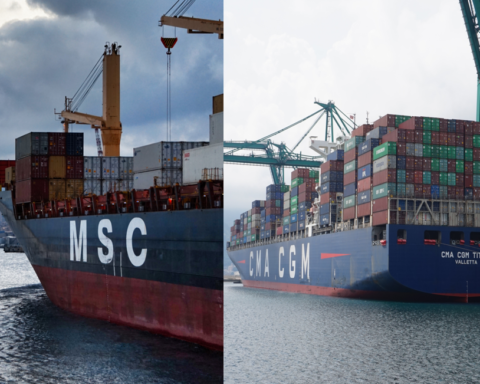Shipping thrives on healthy economies, trade without barriers and international agreements that facilitate business choices.
Over the last few years, a lively and competitive import/export industry has managed to keep countries with very low or negative GDPs like ours standing,
The trend in the second half of 2019 shows just how sensitive the sector is to protectionist activities (USA), tariffs and trade wars. Moreover, due to the international situation, we failed to see the typical post-summer recovery in Italy. A much more serious scenario hit Trans-Pacific trade, where minimal deviations in US-China trade volumes made the difference.
For 2020 one can imagine a slowdown in the tension between the United States and China (mutual interests in the medium term will prevail), while, on the Iran issue, there do not seem to be any signs of openness/a solution, as the recent events demonstrate: the killing of General Soleymani represents, from this point of view, a dramatic escalation of tension in the Persian Gulf.
Considering that the Italian GDP for 2020 is expected to be at stagnation level, we have to rely on the improvement of the international scenario to be able to count on a +1/1.5% growth in our imports/exports.
In the meantime, shipowners are facing a number of challenges, one of which is the entry into force of the new international legislation required by the International Maritime Organization which imposes a 0.5% limit on sulphur emissions from maritime transport.
The scarce availability of low-sulphur fuel (sold at high prices) has led companies to focus on the best alternative choice (second-best), i.e. exhaust fume purifiers, scrubbers, which are both expensive and out of line with the current ecological mood (especially open-circuit ones).
Judging from the previous experience of the bunker surcharge (BAF), recovered by shipowners in percentages well below 100%, we can imagine that it will be very difficult for shipping companies to put the totality of the extra costs related to the sulphur cap on the shoulders of their customers. This is because, in the extremely competitive environment in which carriers operate, the composition of ocean freight (and land, with door-to-door quotations) becomes an all-in where the additional charges disappear or are subject to commercial negotiation.
In general, shipowners have been showing low or negative margins for many years. Highs and lows in liner shipping have always existed, but from 2008 onwards prolonged and “globalized” crises have put the least effectively managed companies under great strain.
This led first to encouraging horizontal concentration processes between liners of similar size, then – once the benefits of the economies of scale for this type of operation were exhausted – carriers aimed to generate new cash flows by operating vertical integrations in land and port logistics, which are believed to offer greater margins.
However, the expected economic effects, even for this type of initiative, are not always certain. Low profit margins remain a problem that those who work in the sector are forced to deal with sooner or later. Perhaps this is also the reason why the institutions (first and foremost the European ones) have been forced to give preferential treatment to shipping lines.
It is no coincidence that the EU has been in favour of renewing, without amendments, the Consortia Block Exemption Regulation, i.e. the regulatory scheme that allows container transportation companies to establish operational alliances as an exemption from the “standard” EU antitrust rules. This is a measure that shipowners consider to be fundamental, as it allows them to take full advantage of market opportunities by ensuring flexibility and efficiency of service.
Aggregation processes, even if less profitable than in the past, are in fact a must for those who want to survive in the current competitive climate. Shipowners have long since gone ashore, becoming terminalists and are now trying to control the logistics chain as well, activating new synergies in previously unexplored areas such as Electronic Data Interchange (EDI).
A number of companies have recently joined forces (in the Digital Container Shipping Association)to redefine IT and security standards and impose their own block-chain in the medium term on all stakeholders. It is astonishing that authorities of any order and rank do not interfere in this process, which could soon lead shipping lines to set new industry standards and modify existing ones.
Likewise, we should keep an eye on another growing phenomenon: instant confirmation of container bookings on board ships. The trend is growing even if, for the moment, the numbers are still not completely relevant. Investments, however, are increasing exponentially. The organizational impact of these choices is evident: certainly, the trend towards the centralization of certain activities in “world locations ” will be accentuated. For the cluster of shipping company suppliers, centralization is already common practice these days, with procurement offices concentrated at European level.
Mega shipping is yet another aspect that cannot be ignored. In hindsight, it is a fact that a double error in shipowners’ judgment has led to a useless race to build bigger and bigger ships.
The first mistake was economic. To put it simply, it was believed that China would maintain high growth rates in exports over a long period. On the contrary, the slowdown was significant, with the repositioning of the Asian country on domestic consumption. The second mistake was a commercial one. Those who started building the first 18-20,000 TEU ships believed that competition would not follow suit, but this was not the case.
The result has been unsustainable for individual companies, but the investments have been maintained through the creation of alliances, which have ended up exerting an enormous infrastructural pressure not only on ports but also on the public entities responsible for port management and control.
The institutions, in particular, can no longer just stand around and watch. Today they have to take on a new proactive, strategic role, in countless scenarios, the outcome of which determines the development opportunities of the Countries they represent. From this point of view, it will be important to know how the Ten-T network governance models will be redefined and what impact individual Member States will have on the European Commission’s choices of vision.
However, in this new geological era (mega ships, horizontal and vertical alliances; block chains and logistics operators such as Amazon, with 360-degree strategies that include sea as well as air and rail) no one can afford just stand around and watch anymore.
This is the situation and you have to live with it. Compared to 10 years ago, our sector has changed as evidently as the transition from the Stone Age to the Iron Age thousands of years ago. The port perimeter has changed a great deal over two decades. The traditional parameters used to measure the competitiveness of a port (i.e. the performance of operators) are no longer sufficient.
Governing these processes and understanding their dynamics is now more necessary than ever. Terminal operators, above all, will have to, in order to follow the new trends of vertical integration, otherwise the overall service offer will be rapidly impoverished: either we will be able to be an active part of this new world or we will be condemned to becoming irrelevant.
Translation by Giles Foster




